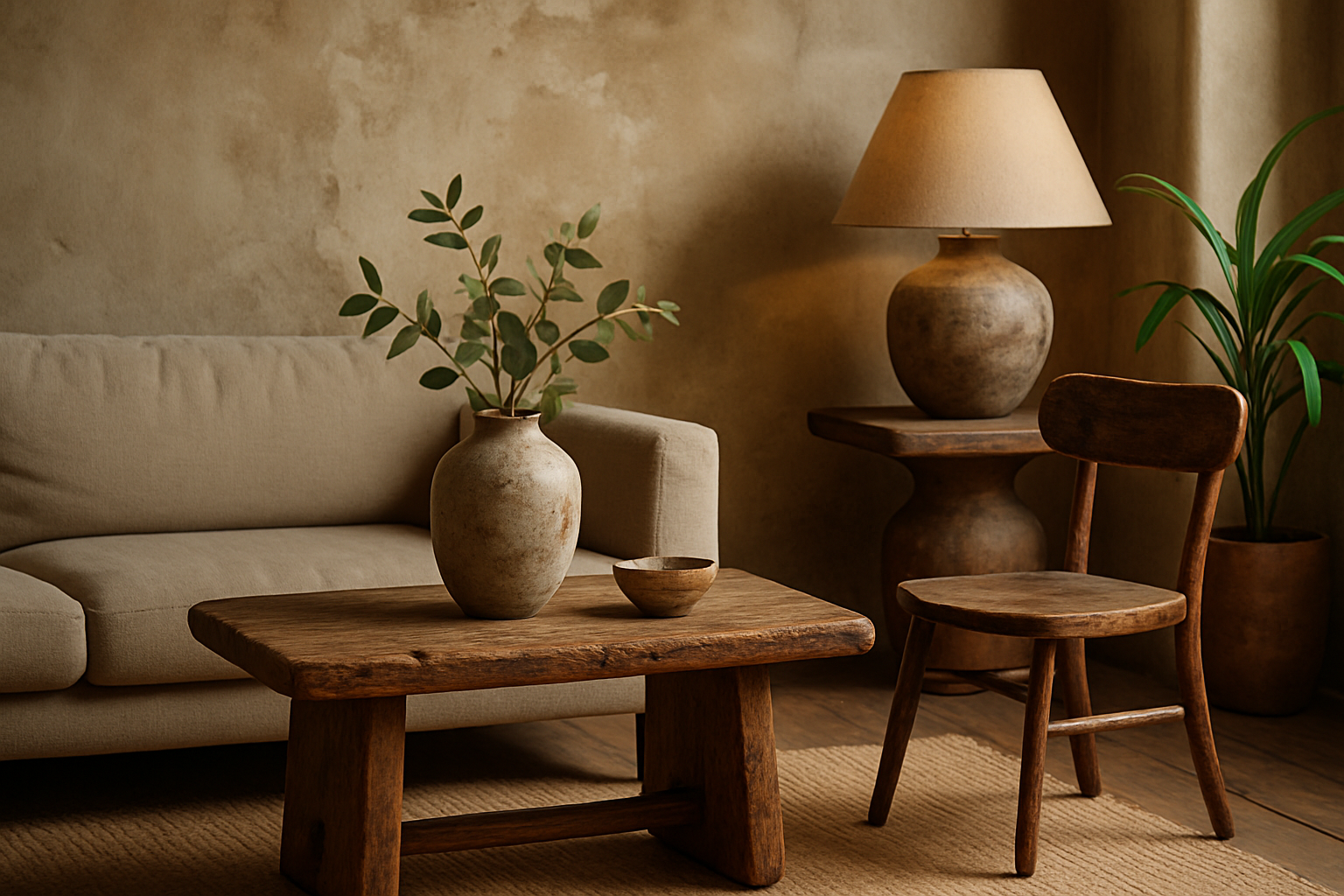Wabi-Sabi Inspired Home Design: Embracing Imperfection in American Interiors
The quest for perfection in home decor often leads to sterile, uninspiring spaces. But what if we told you that embracing imperfection could create a more authentic, soulful living environment? Enter wabi-sabi, the Japanese philosophy that finds beauty in the flawed and incomplete. This ancient concept is gaining traction in American homes, offering a refreshing antidote to the polished perfection that has long dominated interior design trends.

The Roots of Wabi-Sabi
Wabi-sabi has its origins in 16th century Japanese tea ceremonies, where simple, rustic tea bowls were prized over ornate, perfect ones. The term wabi originally referred to the loneliness of living in nature, while sabi meant withered or lean. Over time, these concepts evolved to embody a worldview that accepts and celebrates the imperfect and transient nature of life.
In the context of home design, wabi-sabi translates to an aesthetic that values simplicity, authenticity, and the beauty of natural processes. It’s about finding harmony with nature and embracing the passage of time, rather than fighting against it. This philosophy stands in stark contrast to the sleek, mass-produced perfection that has dominated much of modern design.
Wabi-Sabi Materials and Textures
At the heart of wabi-sabi design is a deep appreciation for natural materials and textures. In American homes, this might manifest as exposed brick walls, reclaimed wood floors, or handmade tiles with subtle variations in color and shape. The goal is to create spaces that feel lived-in and authentic, rather than sterile and artificial.
Stone, wood, clay, and other natural materials are key elements in wabi-sabi interiors. These materials age beautifully, developing character and patina over time. A marble countertop with slight staining or a wooden table with visible knots and grain are perfect examples of wabi-sabi aesthetics in action.
Textiles play a crucial role as well. Think raw linen curtains, wool throws with visible weaves, and cotton bedding in muted, earthy tones. The emphasis is on natural fibers and textures that feel good to the touch and improve with age.
Color Palettes Inspired by Nature
The wabi-sabi color palette draws inspiration directly from nature. Muted earth tones, soft greens, and warm neutrals dominate, creating a sense of calm and connection to the natural world. These colors are often applied in layers, with subtle variations that add depth and interest to a space.
In practice, this might mean walls painted in a warm, off-white tone, accented with furniture in deeper earth tones like terracotta or sage green. The key is to avoid stark contrasts or overly saturated hues, opting instead for a harmonious blend of natural tones that create a serene, cohesive environment.
Curating with Intention
Wabi-sabi interiors are characterized by a sense of intentionality and restraint. Rather than filling spaces with decorative objects, the focus is on carefully selected pieces that hold personal meaning or tell a story. This might include family heirlooms, handcrafted items, or objects collected during travels.
The art of display is crucial in wabi-sabi design. Objects are often arranged asymmetrically, with negative space playing an important role in the overall composition. A single branch in a simple vase, or a collection of smooth river stones on a wooden tray, exemplify the wabi-sabi approach to decor.
Embracing Imperfection and Wear
Perhaps the most radical aspect of wabi-sabi design for many Americans is the embrace of imperfection and wear. In a culture that often equates newness with value, the idea of celebrating chips, cracks, and patina can be revolutionary.
This might mean choosing a vintage rug with visible wear patterns over a pristine new one, or opting for handmade ceramics with slight irregularities rather than mass-produced dishes. It’s about seeing the beauty in objects that bear the marks of time and use, understanding that these imperfections add character and depth to our living spaces.
Wabi-Sabi and Sustainability
The wabi-sabi philosophy aligns naturally with sustainable living practices. By valuing long-lasting, natural materials and embracing repair and reuse, wabi-sabi interiors inherently have a lower environmental impact than those driven by fast-fashion trends.
This approach encourages homeowners to invest in quality pieces that will age beautifully, rather than disposable items that quickly end up in landfills. It also promotes the use of local, handcrafted items, supporting artisans and reducing the carbon footprint associated with mass production and long-distance shipping.
Incorporating Wabi-Sabi in Modern American Homes
Adopting a wabi-sabi approach doesn’t mean completely overhauling your home. Small changes can make a big impact. Start by decluttering and focusing on items that truly bring joy or serve a purpose. Introduce natural materials through textiles, furniture, or decorative objects. Embrace asymmetry in your arrangements and allow imperfections to shine rather than hiding them.
Remember, wabi-sabi is as much a mindset as it is an aesthetic. It’s about finding beauty in the everyday, appreciating the passage of time, and creating spaces that feel authentic and deeply personal. In a world of constant change and digital overload, wabi-sabi offers a much-needed reminder to slow down and find peace in imperfection.
As more Americans seek to create homes that reflect their values and promote well-being, the principles of wabi-sabi offer a compelling alternative to prevailing design trends. By embracing this ancient philosophy, we can create living spaces that are not only beautiful but also deeply meaningful and in harmony with the natural world.





